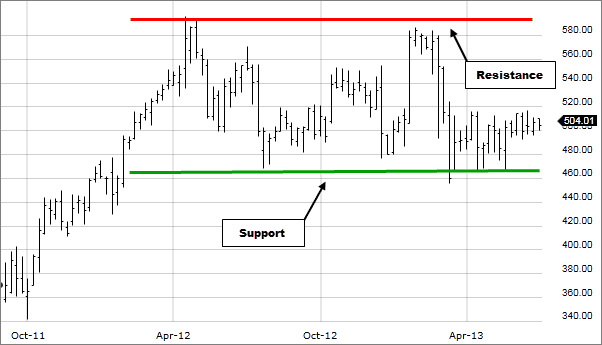Forex Trading Strategies for Trailing Stops: Techniques for Using Trailing Stops to Lock in Profits
In the world of forex trading, successful risk management and profit maximization are essential. Trailing stops are a valuable tool that traders can use to achieve both goals simultaneously. This article explores various forex trading strategies that incorporate trailing stops, providing insights into their benefits and application techniques. By understanding and effectively implementing these techniques, traders can navigate the volatile forex market with greater confidence and profitability.

Table of Contents:
1. Introduction
2. Understanding Trailing Stops: Definitions and Basics
3. Forex Trading Strategies Using Trailing Stops
4. Benefits of Using Trailing Stops
5. Implementing Trailing Stops: Best Practices
6. Common FAQs About Forex Trailing Stops
7. Footnote
Introduction:
Forex trading is a dynamic endeavor where market conditions can change rapidly. Traders employ a multitude of strategies and tools to optimize their trading outcomes. Among these tools, trailing stops stand out as a crucial technique for managing risk and securing profits. Trailing stops allow traders to adjust their stop-loss orders as the trade moves in their favor, ensuring that profits are captured while minimizing potential losses. In this article, we delve into the intricacies of forex trading strategies that utilize trailing stops, offering readers a comprehensive understanding of their application.
Understanding Trailing Stops: Definitions and Basics:
A trailing stop is a specialized order type that tracks the price movement of a trade, maintaining a certain distance or percentage below the current market price (for long positions) or above (for short positions). The primary purpose of a trailing stop is to allow a trade to continue profiting while locking in gains as the price moves in a favorable direction.
Trailing stops differ from regular stop-loss orders, as they are dynamic and adjustable. While a regular stop-loss order remains fixed at a specific price point, a trailing stop adjusts upward (in long positions) or downward (in short positions) as the trade becomes more profitable.
Forex Trading Strategies Using Trailing Stops:
1) Trend Following Strategy: This strategy involves identifying and capitalizing on prevailing market trends. Traders using this approach place their trailing stops just below the recent significant low points (for long positions) to catch potential trend reversals. This ensures that profits are protected if the trend suddenly changes direction.

2) Volatility-Based Strategy: In this strategy, traders analyze market volatility using indicators such as Average True Range (ATR). During high volatility periods, traders widen the trailing stop distance to avoid premature stop-outs. Conversely, during low volatility, they tighten the trailing stops to lock in gains.

3) Support and Resistance Strategy: Support and resistance levels indicate where the price is likely to encounter barriers. Traders using this strategy place their trailing stops just beyond these levels. If the price breaks through, the trailing stop adjusts accordingly, allowing the trader to stay in the trade longer while minimizing risks.

Benefits of Using Trailing Stops
a) Minimized Risk: Trailing stops reduce the risk of losing profits due to abrupt market reversals.
b) Profit Locking: Trailing stops ensure that profits are captured, even if the market eventually turns against the trade.
c) Flexibility: Traders can tailor trailing stop strategies to their risk tolerance and trading style.
d) Emotional Discipline: Trailing stops automate decisions, mitigating emotional trading reactions.
Implementing Trailing Stops: Best Practices:
Selecting the right trailing stop strategy depends on the trader's risk tolerance, trading style, and market conditions. Setting appropriate trailing stop distances is crucial to avoid being stopped out too early. Traders should avoid over-tightening their stops, as this can lead to premature exits and missed profits. Regularly monitoring and adjusting trailing stops as the trade progresses is also essential.
Common FAQs About Forex Trailing Stops:
Q1: What is the main purpose of using trailing stops in Forex trading?
A: The primary purpose of trailing stops is to protect and lock in profits as a trade moves in a favorable direction, while still allowing room for the trade to develop.
Q2: How do trailing stops differ from regular stop-loss orders?
A: Trailing stops are dynamic and adjust as the trade becomes more profitable, whereas regular stop-loss orders remain fixed.
Q3: Can trailing stops guarantee no losses?
A: Trailing stops can minimize losses, but they cannot guarantee zero losses, as market conditions can change unexpectedly.
Q4: What factors should I consider when deciding the distance for a trailing stop?
A: Factors include market volatility, time frame, support/resistance levels, and your trading strategy's objectives.
Q5: Is there a universal trailing stop strategy, or should it vary with market conditions?
A: Trailing stop strategies should adapt to market conditions; there's no one-size-fits-all approach. The choice depends on the trader's analysis and risk tolerance.
Q6: Can I combine trailing stops with other trading tools?
A: Absolutely. Trailing stops can be combined with technical indicators, chart patterns, and other strategies to enhance overall trade management.
Q7: Should trailing stops be adjusted during major news releases?
A: It's advisable to widen trailing stops before significant news releases to account for potential volatility spikes that could trigger premature exits.
Q8: How do trailing stops contribute to disciplined trading?
A: Trailing stops remove the emotional aspect of decision-making by automating trade management, helping traders stick to their strategies without being influenced by emotions.
Footnote:
Forex trading is a dynamic endeavor that requires strategic decision-making and risk management. Trailing stops offer traders a powerful tool to navigate the market with confidence, secure profits, and minimize losses. By understanding the various trailing stop strategies outlined in this article and adapting them to their individual trading styles, traders can enhance their trading outcomes and achieve greater success in the ever-changing world of forex trading. Remember that practice, experimentation, and continuous learning are essential to master the art of using trailing stops effectively.











Discussion